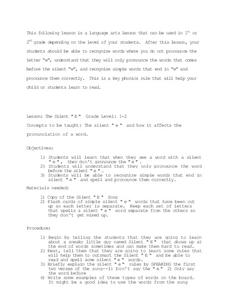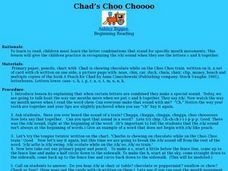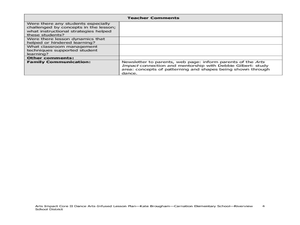Curated OER
Locating Places
Young scholars demonstrate how to use the map grid system. For this map skills lesson, students are given coordinates to locate several locations on a world map. Young scholars use the map grid system to identify these locations.
West Corporation
Making Inferences – Use Your Mind to Read!
How can you tell if someone is happy? The lesson works with elementary and middle school scholars to activate their schema and pay attention to details to make inferences in their daily lives, poetry, and other literature. Cleverly...
Mind Snacks
Learn Italian - MindSnacks
Once your class samples these games, they won't want to stop learning Italian. Eccellente! Effective for beginning and intermediate Italian learners, picking up new words and phrases through this app is an entertaining task.
K12 Reader
Describe It with Adjectives
Put children's descriptive writing skills to the test with these fun collaborative writing activities. Presented with the picture of an object, young writers are are tasked with creating a description that provides enough detail for one...
Nosapo
Weather and Present Continuous Tense
What's the weather like right now? Is it raining or is it snowing? Using present continuous tense, learners practice describing the weather with weather vocabulary words.
Virginia Department of Education
Weather Patterns and Seasonal Changes
Get your class outside to observe their surroundings with a lesson plan highlighting weather patterns and seasonal changes. First, learners take a weather walk to survey how the weather affects animals, people, plants, and trees during...
Thoughtful Learning
Using Positive Self-Talk
Boost positive self-talk with a chart that turns negative feelings into happy ones. Scholars write down their negative emotions then rewrite them with a positive flair to aid in changing their outlook.
Curated OER
Bodaciously Beautiful Butterflies Take Flight
Students complete study on butterflies using real caterpillars, keep individual daily journals of observations, and complete timeline for their caterpillar/butterfly.
Curated OER
Symmetry Monsters
Students discuss and study the word symmetry. They examine letters of the alphabet, shapes, and artwork and decide if they are symmetrical or not. Then they create their own symmetry monsters.
Curated OER
Animal Classification
Students are introduced to the concept of classification as it relates to objects, information, and characteristics. In this classification activity, students research a variety of animals. Students study the Linnaeus's system of...
Curated OER
Colors of our Earth
Learners are introduces to soil profile classification. They remember that classification of soils is an important aspect of studying soils as it aids in predicting how soils react to weathering, transport nutrients or pollution. ...
Curated OER
Exploring Aerodynamics
Students explore aerodynamics. In this aerodynamics lesson, students study the flight patterns of three paper airplanes and discover the underlying principles of aerodynamics. Resources and grade level modifications are present.
Curated OER
Fraction Spelling
An interesting take on spelling practice is included here! Emerging spellers take their weekly spelling list and create a three-column chart. In the first column, they write the word itself. In the second column, they write how many...
Curated OER
My Tooth is Loose
Elementary learners study the /th/ sound as a whole class. First they hear the sound and learn a tongue twister. After practicing together, they write the digraph on their practice paper. Then, to study the words in context, the class...
Curated OER
The Silent "E"
Students discover the silent "e". For this phonics lesson, students learn a song pertaining to the silent "e" sound and study pronouncing words that have the silent "e".
Curated OER
Shhh!
What sound do fish and ship have in common? Study the /sh/ sound with your young learners. They hear a common tongue twister, spell words in their letter boxes, and read The Rainbow Fish by Marcus Phister to hear the words in context.
Curated OER
Chad's Choo Choooo
Choo, choo! Do your youngsters like trains? After studying the target sound, have your learners read A Peach for Chad. Do a class read and an independent read to increase fluency. At the lesson's close, consider creating a ch train where...
Curated OER
Shhhhh, She is Sleeping
The sheep on the ship was shocked by the Fish on the Shore! Can you guess which digraph we're studying? Take a look at the /sh/ sound with your young readers. Have them write words with the target sound in letter boxes, and then small...
Curated OER
/sh/ Sound Work
What letters create the /sh/ sound? Have your elementary learners study the sound, write different words that use the sound in their letter boxes, and read One Fish, Two Fish, Red Fish, Blue Fish! After this mini-lesson, can your...
Curated OER
Worms, Nature's Recyclers!
Students study what worms need to survive in different environments. They study how worm composting improves soil and reduce waste. They discuss composting techniques and present a puppet show about a worm's life.
Curated OER
Watch Out Books! I'm Reading with Expression!
Learners discover how to read with expression. By reading and rereading decodable words in connected texts, students study the importance of expressions and how it can make a book more enjoyable.
Curated OER
Spacecraft Launched on Mission to Pluto
Students read a news article about a space mission being launched to the planet Pluto. They study the necessary vocabulary and complete an anticipation guide of questions which they revisit after they read the article.
Pennsylvania Department of Education
Shapes Around Us
Learners use manipulatives to study shapes. They sort shapes and use correct geometric terminology to describe them. Students find real-life examples of 2 and 3 dimensional shapes, and classify figures in their classroom according to...
Curated OER
Dancing Polygons and Non-Polygons with Patterns
Second graders study movements. In this dance lesson plan, 2nd graders draw patterns selecting one to represent through movement with their body.

























